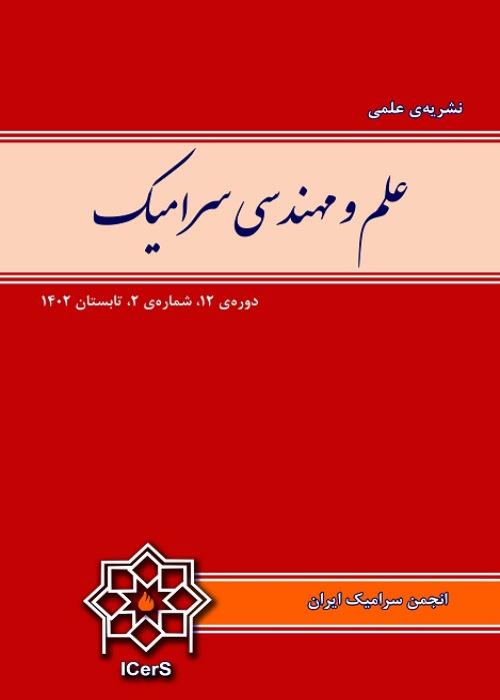Synthesis and Ionic Conduction of Ca0.05Sm0.2Ce0.75O1.9-δ - (Li,Na)2CO3 Nanocomposite as an Electrolyte for Low-Temperature Solid Oxide Fuel Cell
Author(s):
Abstract:
One of drawbacks of solid oxide fuel cells (SOFCs) is high temperature ionic conductivity of their electrolytes. Several researches have been done to find a solution to overcome the problem. One method is to incorporate co-doped cerium oxide (Ceria) with metal salts such as carbonates. In the present work, nanopowders of calcium and samarium co-doped cerium oxide of Ca0.05Sm0.2-xCe0.75O1.9-δ (CSDC 5) were prepared using citrate-nitrate auto combustion method. Phases and crystallite size of the sample were determined by X-ray diffraction (XRD). Field emission scanning electron microscope (FE-SEM) was used for morphological studies. The XRD pattern showed that a single-phase solid solution of calcium and samarium co-doped ceria was obtained. The crystallite size of the particles was 19 nm in diameter as calculated from data obtained through XRD result of (111) peak. FE-SEM images depicted that synthesized CSDC 5 powders were sphere-like and approximately 20 nm in size. Also, it was shown that the sintered CSDC 5 had a dense microstructure. The ionic conductivities of all samples were determined by AC impedance spectroscopy (EIS) in temperature range of 250 650ºC. EIS results demonstrated that Ca0.05Sm0.2Ce0.75O1.9- had total conductivity of 0.015 S.cm-1 at 650 ºC. CSDC 5 (Li,Na)2CO3 (CSDC 5 LN) nanocomposite electrolyte was synthesized by mixing the lithium and sodium carbonates with CSDC 5 nanopowders. XRD pattern of the composite sample was similar to the patterns of ceria and CSDC 5 which indicates that the carbonate phase was probably amorphous. TG/DTA thermal analysis results demonstrated that the carbonate phase was remained and undecomposed up to temperature of 730ºC. FE-SEM images of the composite powders depicted that CSDC 5 powders were covered by carbonate phase. In addition, the sintered composite showed a porous microstructure using FE-SEM. EIS data proved that above the temperature of 500ºC, total ionic conductivity of CSDC 5 LN was 0.073 S.cm-1 which was nearly 5 times higher than that of CSDC 5. This implied that using carbonate phase would increase the total ionic conductivity due to multiple ions of Na, Li, and CO2-3 would be involved in ionic conduction at the mentioned temperature range. This makes it a serious candidate as electrolyte material for low temperature solid oxide fuel cell (LT-SOFC).
Keywords:
Language:
Persian
Published:
Iranian Journal of Ceramic Science & Engineering, Volume:5 Issue: 1, 2016
Pages:
1 to 14
magiran.com/p1635179
دانلود و مطالعه متن این مقاله با یکی از روشهای زیر امکان پذیر است:
اشتراک شخصی
با عضویت و پرداخت آنلاین حق اشتراک یکساله به مبلغ 1,390,000ريال میتوانید 70 عنوان مطلب دانلود کنید!
اشتراک سازمانی
به کتابخانه دانشگاه یا محل کار خود پیشنهاد کنید تا اشتراک سازمانی این پایگاه را برای دسترسی نامحدود همه کاربران به متن مطالب تهیه نمایند!
توجه!
- حق عضویت دریافتی صرف حمایت از نشریات عضو و نگهداری، تکمیل و توسعه مگیران میشود.
- پرداخت حق اشتراک و دانلود مقالات اجازه بازنشر آن در سایر رسانههای چاپی و دیجیتال را به کاربر نمیدهد.
In order to view content subscription is required
Personal subscription
Subscribe magiran.com for 70 € euros via PayPal and download 70 articles during a year.
Organization subscription
Please contact us to subscribe your university or library for unlimited access!


